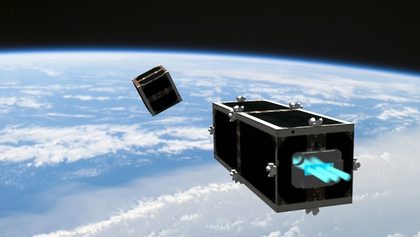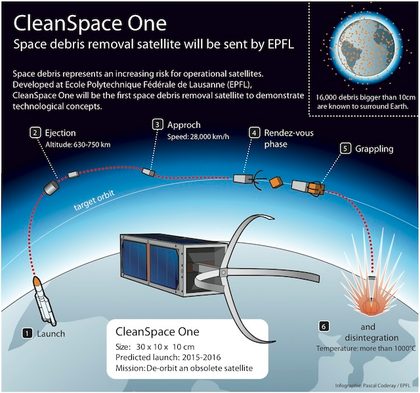SUMMARY
This is AI generated summarization, which may have errors. For context, always refer to the full article.

MANILA, Philippines – Scientists in Switzerland have launched a project aiming to rid space of thousands of debris that pose hazards to spacecraft.
The CleanSpace One project, developed by scientists at the Swiss Space Center at the Ecole Polytechnique Federale de Lausanne (EPFL), aims to launch a family of “de-orbiting” satellites designed to clean up space debris. The project was announced on Wednesday, February 15.
Scientists estimate around 16,000 pieces of space debris greater than 10 cm in diameter – part of more than 500,000 items floating in space known as “space junk” – are floating in orbit around our planet, and collisions with working spacecraft, including the International Space Station (ISS), are a threat.
A spacecraft can be rendered damaged or useless if space junk collides with it, such as in the case of the Iridium-33 satellite exploding upon impact with the abandoned Cosmos-2251 satellite.
“It has become essential to be aware of the existence of this debris and the risks that are run by its proliferation,” Claude Nicollier, an astronaut and a professor at the EPFL, said in a statement.
Space debris is also a big headache for insurers, costing them an estimated US$20 billion to insure existing satellites.
The project plans to develop satellites that will be launched into orbit, and will target space debris which it will then “grab.”
After it successfully couples with the debris, the two satellites wil then “de-orbit” and re-enter the Earth’s atmosphere, where it will burn up.
Eventually, the project will have a “whole family of ready-made systems” that can be used several times in bringing space debris back to earth, according to Volker Gass, SSC director.
The proponents see the first orbital rendez-vous in 3 to 5 years. The design and building of CleanSpace One, as well as the initial launch, is estimated to cost 10 million Swiss francs.
CleanSpace One’s first potential target is the Swisscube picosatellite, or the Tisat satellite, both launched by the Swiss. – Rappler.com

Add a comment
How does this make you feel?
There are no comments yet. Add your comment to start the conversation.